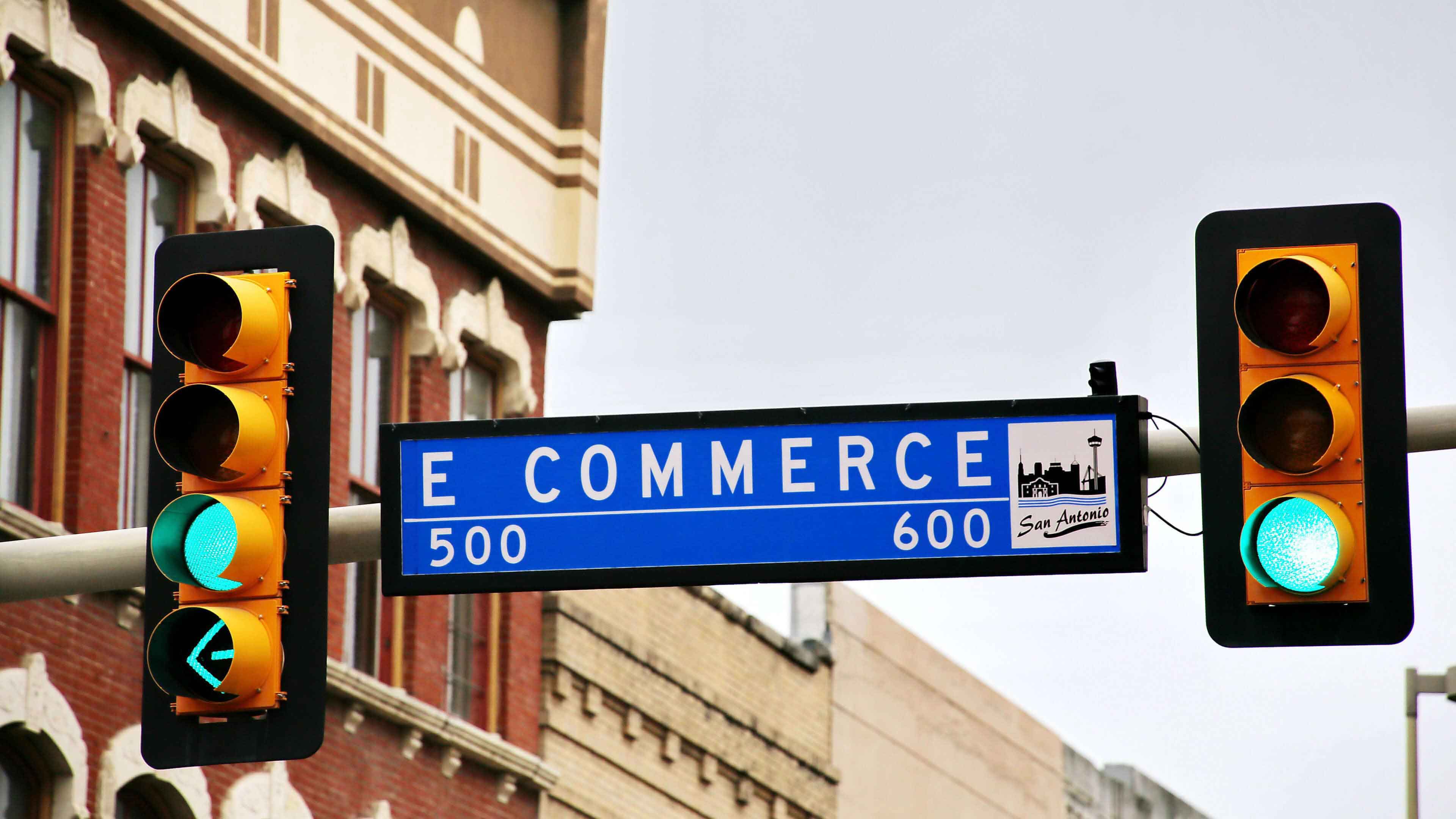How to choose an ecommerce vendor that will support your long-term business needs
- Last Updated : November 23, 2023
- 559 Views
- 6 Min Read

One of the hardest parts of starting an ecommerce business is finding the right tools with all the right functionality for the right price. With the ecommerce software industry overflowing with solutions that promise to cater to your every need and help you grow, finding the perfect solution is easier said than done. This is partly because “ecommerce software” is extremely vague. Thanks to years of competing for top search result rankings, vendors have inadvertently (or not) flooded the internet with the keywords “ecommerce software,” falsely deeming may tools that don’t necessarily support an ecommerce venture as entirely capable.
Because of this practice, and the constantly-changing nature of the way we buy, sell, and consume, it’s become nearly impossible to determine what features ecommerce software should or shouldn’t have. So, I’m taking a more flexible approach in this article.
We’ll look at the essential functionality that every ecommerce business needs, and then discuss semi-essential features, and nice-to-have features. Then, to close, we’ll talk about what you should consider before you hand over your credit card to an "ecommerce software” vendor.

Essential ecommerce software features
Product directory
I know what you’re thinking. It’s obvious, yes, but it needs to be said. Because if you look through the websites of some ecommerce software vendors, you'll see more fluff than information about the actual directory. Your platform should have an intuitive interface where you can list out your products, describe each in detail, and add photos and reviews.
Payment processing
Some vendors build payment processing into their systems. This means they will process each transaction that occurs in your store. Other vendors will offer payment integrations that you have to set up. Often, these integrations are easy to implement, but other times you may have to enlist an integration specialist or an ecommerce consultant to help. Either way, ensure that you know what’s expected of you and what the vendor will provide out of the box.
Privacy and security capabilities
By law, every piece of customer data you collect, such as contact information, payment details, and addresses, must be protected. Both Australia and New Zealand have data collection, storage, processing, and transparency requirements that every business* must follow. As an ecommerce business, all data you collect will be stored on your vendor’s servers, which means you need to be confident that your vendor is doing their part properly. Vendors usually incorporate privacy and security mechanisms into their product to comply with various regulations across the world. You can find this information in the vendor’s privacy and security policy, ideally, on its website.
*At the time of writing, Australian businesses with an annual revenue less than $3 million are exempt from the Privacy Act of 1988. However, the government is in consultation with business groups about removing that exemption.
Semi-essential ecommerce software features
Not every business will want (or need) all of the functionalities listed below. But you might, so it's worth knowing they're available.
Multi-currency support
This won't be necessary if you only cater to a local audience. But if, one day, you want to sell to customers across the ditch, it will be essential.
Inventory tracking and updating
Some platforms have inventory management built into their store tool. This can be handy, depending on what you’re selling, whom you're selling to, and in what quantities. You might get away with a simple database with a spreadsheet view, or you might need a full-blown inventory system with multi-warehouse support.
Mobile-ready website and blog
A website is a lot more than an online store. Although the store is a part of it, your entire website serves as a digital business card, helping you generate leads and establish your expertise. It's where you house your blogs, user guides, downloadable marketing material, and your contact information. A website is the only medium you’ll truly own as a business, and it’s important to get it right.
Website tracking and engagement
A website is only useful if you know who’s browsing it and what they’re looking for, so you can support them appropriately. Ensure that your vendor provides built-in analytics or integrations with reporting tools, like Google Analytics and Zoho Analytics, as well as monitoring tools with heat maps showing your visitors’ browsing patterns. Bonus points if the vendor offers built-in chatbot functionality to enhance the customer experience and speed up the checkout process.
AI recommendations
Seen the “people also bought” section on popular online shopping sites? It's powered by AI engines that analyse shopping patterns to identify products that are frequently purchased together or items that complement each other—like a pair of avocado socks and an avocado chair. Some vendors provide recommendations as an AI feature, while others might offer a more primitive version where an algorithm matches products based on the key words you associate with each product. Both have their merits, and which one you need will depend on the size and nature of your business.
Automated emails
At every stage of their shopping experience, your customers expect notifications about their purchases. Most vendors have this functionality built-in (it’s kind of essential), but the number and type of emails may be limited. For example, a vendor might offer emails for account signups and purchase confirmations, but not for drip email campaigns to nurture customers from the sign-up stage through purchases and loyalty program enrolments. If your vendor doesn’t provide a comprehensive email campaign functionality, check whether it offers integration with email marketing software systems, instead.
SEO and SEM
Making content available doesn’t automatically make it accessible. This is where search engine optimisation and search engine marketing come in. Many ecommerce vendors have built-in functionality to verify your online store on Google and other search engines, set up search engine crawling, prevent pages from being crawled, and set up a sitemap. Have a look at Google's SEO starter guide to understand what functionality you'll need from your ecommerce vendor.
Point of sale (PoS)
If you have a physical storefront in addition to your online store, you’ll need a point of sale system connected to your online store. A PoS is a software system that records and processes your sales. It connects to your inventory database and automatically updates stock for every sale you make. When choosing an ecommerce system, consider your long-term plans for the business. Will you potentially set up a physical store down the road? If you’re unsure, it might be worth exploring whether the vendor offers PoS functionality that you can enable/disable according to your needs, or if the vendor makes it easy to migrate to a different vendor should you need to in the future.
Nice-to-have ecommerce software features
Invoicing
Most vendors will offer a built-in, free invoicing system with their payment processing functionality. The default option might be adequate for starting out, however, if it isn't or if you're running a large-scale business that requires customised invoices, you must verify that your vendor has integration capabilities with the accounting system of your choice.
Shipping
Ecommerce vendors offer integrations with shipping providers. Before you choose a vendor, have a look at the shipping providers they offer to ensure seamless integration with your preferred provider. It's also worth assessing whether the vendor offers international carriers, should you decide to expand your business overseas.
Understanding ecommerce software pricing structures
Whether a piece of software is worth your time and effort depends on the functionality you get for the price.
When evaluating ecommerce software, consider what's involved in each vendor's pricing structure. Some vendors charge for every transaction they process on your behalf, while others charge extra for credit card transactions, and some have different surcharges for online and offline payments. You might also notice vendors that offer a handful of payment gateways by default and charge a separate price for every additional payment option you want to add, such as PayPal, Stripe, Apple Pay, or a buy-now-pay-later system.
Apart from these basic pricing considerations, look at the additional costs of maintaining the platform itself. Ask yourself if you can easily migrate data to another vendor if you outgrow the system or if it'd be more sustainable to expand business operations with the same vendor—and always account for domain registration and website hosting expenses.
Many vendors offer custom pricing for businesses of a certain size or industry. Some vendors offer discounts on specific integrations or functionalities. Investigate these options and use them if you're eligible. And most importantly, utilise the free trial options that nearly every vendor offers. You can't really tell if a system works for you until you've worked on it. Keep in mind, some vendors charge an extra fee for customer service, so during your trial period, consider chatting with the customer support team to learn about their pricing structure (if any).
Conclusion
There's a lot to consider before you make your first sale as an ecommerce business. Get your technology systems in order and make sure you're comfortable with the software tools you're adopting. Explore every product thoroughly before you make your decision. Take a measured approach to choosing your ecommerce vendor, and before you know it, you'll be filing your first tax return as a business!


